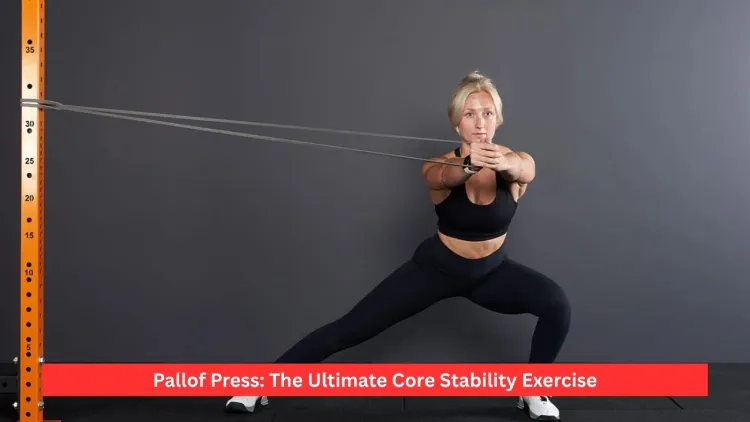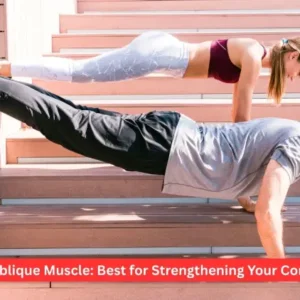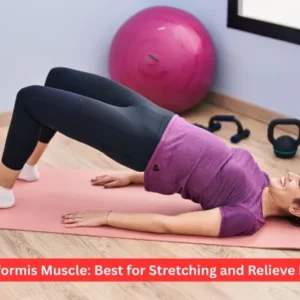Pallof Press is an anti-rotation core workout that helps in tightening the abs, obliques and balance muscles. It helps to improve posture, avoid injuries, and improve sports performance by training your body to resist the twisting forces. This easy yet difficult exercise, when done with a cable or resistance band, forms the strong base of all other strength exercises, and it is also one of the best exercises that gives an individual core strength in actual use.
- What Is the Pallof Press?
- Muscles Engaged during Pallof Press
- The Pallof Press: How to do it
- Pallof Press Variations
- Benefits of the Pallof Press
- Common Mistakes to Avoid
- The Pallof Press: Why it is Worth Doing
- Guide to incorporating the Pallof Press into your routine
- Final Thoughts
- Frequently Asked Questions
What Is the Pallof Press?
Pallof Press is a resistance exercise that builds core strength and was invented by a physical therapist known as John Pallof. It aims at enhancing posture, rotational resistance training, and spine stabilisation. In comparison to the more traditional ab exercises, such as crunches or sit-ups, the Pallof Press aims at being able to resist a force (as opposed to flexing or rotating the spine).
The exercise is practised on a cable machine or on a resistance band tied at the level of the chest. When pushing the handle forward, the main muscles include the core muscles, especially the abs, obliques and the lower back struggle to resist the pull of rotation. This strengthens the core muscles over time and increases stability in everyday activity, lifting of the body or even athletics.
The Pallof Press is deemed to be one of the most important exercises due to the fact that it is an exercise that simulates the way your body naturally stabilises when you perform an action in real life. It is either lifting, swinging a golf club, or pushing a heavy object, and your core has to struggle against undesired rotation all the time. This is what this movement will train and perfect.
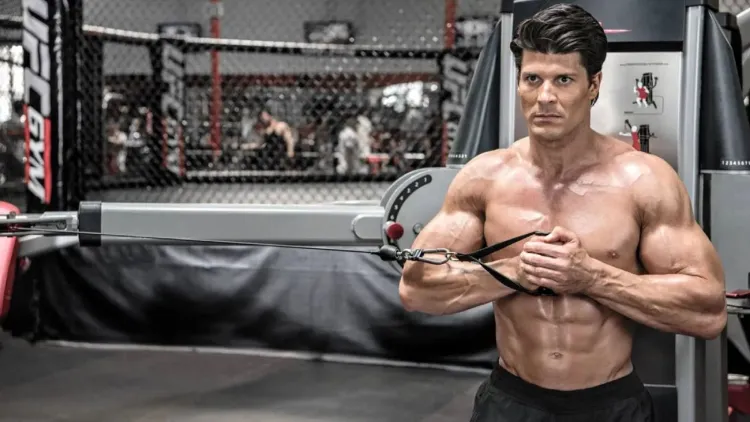
Muscles Engaged during Pallof Press
The Pallof Press targets a few large and stabilising muscles in the body. It is not an ab movement on its own, but a complete core workout with rewards that are split over to other fields.
The essential body muscles used are:
- Rectus Abdominis: This is the six-pack muscle that holds the core together.
- Transverse Abdominis: A Deep core muscle, which enables the support of the posture and stability of the spine.
- Internal and External Obliques: These are side muscles which oppose twisting and are a source of balance.
- Erector Spinae: These are muscles on the back which keep you straight.
- Gluteus Maximus and Gluteus Medius: These maintain the pelvis and the hips in the press.
- Shoulders and Scapular Stabilisers: This allows the pressing action and the appropriate placement of the shoulders.
Pallof Press Compared to squats or deadlifts, which are often compared to compound movements, its use is attributed to a large number of muscles working together, but in this case, it is on your core. It also assists in coming up with coordination and stability between the upper and lower body.

The Pallof Press: How to do it
The Palmar Press requires proper form to gain the optimum benefit and avoid harm. Here’s how to do it step-by-step:
1. Setup
- Wrap the resistance band or cable handle around a firm anchor point that is at the chest level.
- Facing the anchor point, stand sideways keeping shoulder width to shoulder width.
- Keep your chest flat by putting your hand on the handle.
- The next step is to pull outward on the anchor till the band or cable becomes tensioned.
2. Engage the Core
- Stretch your inner elasticity by drawing the stomach in against your back as though you were about to get punched. Shoulders on record, chest on record and spine on record.
3. The Press
- Gradually, press the handle up front in a straight line.
- Remain straight and do not give in to the pull of the cable.
- This is done by holding one or two straight out for seconds.
- Pull the handle to your chest in control.
4. Repeat and Switch Sides
- Repeat 10-15 times on one hand and turn over and repeat on the other hand. Never hurry, but strive to be stable and in control.
The Pallof Press does not sound complex, but when one encounters the rotational pull, he or she would realise it is deemed a good workout and challenging. The challenge is that it is always difficult to keep the body in balance. And that anti-rotation movement gets its strength where it is so much needed.
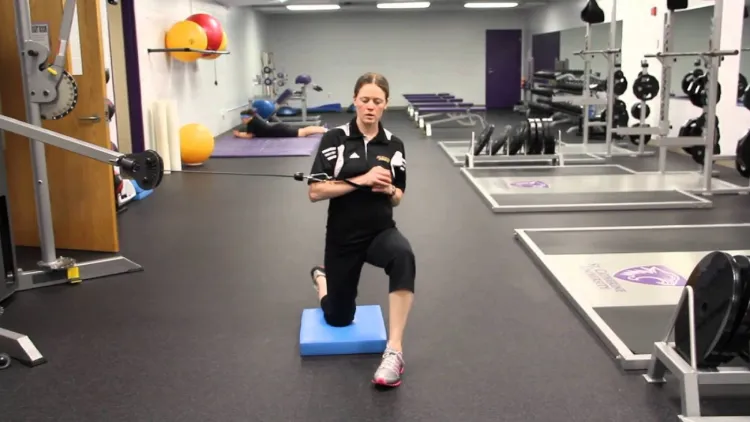
Pallof Press Variations
The genius of the Pallof Press is its flexibility. There are various positions you can do it in, based on the level of strength and the objectives you are pursuing.
1. Standing Pallof Press
The traditional one is best to use for the general stability of the core and the hips.
2. Half-Kneeling Pallof Press
Place one knee on the ground. Such disparity translates to diminished support on the lower body, a fact that needs to be stabilised by your core and glutes.
3. Tall-Kneeling Pallof Press
Elevation of both knees on the floor removes any movement in the legs and isolates the core.
4. Pallof Press with Rotation
This is only after pressing out, but then, turn aside a little bit, not closer to the anchor point to give it some dynamic motion – but control is of the essence.
5. Overhead Pallof Press
The push-up, when bent upwards rather than forwards, will involve your shoulders, upper abdominals and lats more vigorously.
6. Pallof Press Walkout
It can also be achieved by taking a step out of the anchor and keeping the position of the press to enhance resistance and full-body coordination.
With these variations combined, you are able to aim at varied angles and challenges to your core.
Benefits of the Pallof Press
1. Develops Core Strength and Stability
Pallof Press activates all your muscles, which support your spine and ensure posture. This can be compared to crunches, but it trains functional strength deep into your midsection, as compared to crunches, which only train surface ab muscles.
2. Enhances Posture and Performance
Having a strong core allows you to help yourself in the transfer of force, using your legs to your arms, which is an important aspect in sports and lifting. This is what makes it one of the most effective exercises for athletes and other gym-goers who may want to enhance their performance overall.
3. Reduces Risk of Injury
A firm mattress will save your lower back and hips. It will enable one to avoid injury when lifting heavy loads, running, or twisting.
4. Helps in Other Large Exercises
The Pallof Press is found to be a strengthening of the so-called three basics of the gym lift: squat, deadlift, and bench press. It also assists in being tight during lifts that are compound lifts, as well as enhancing form.
5. Enhances Aesthetic Abs
Although this is not crunching, it makes abdominal muscles strong and cut and can be seen when low levels of body fat are combined. The Pallof Press is used to shape the mid part by many athletes without overstraining by doing sit-ups.
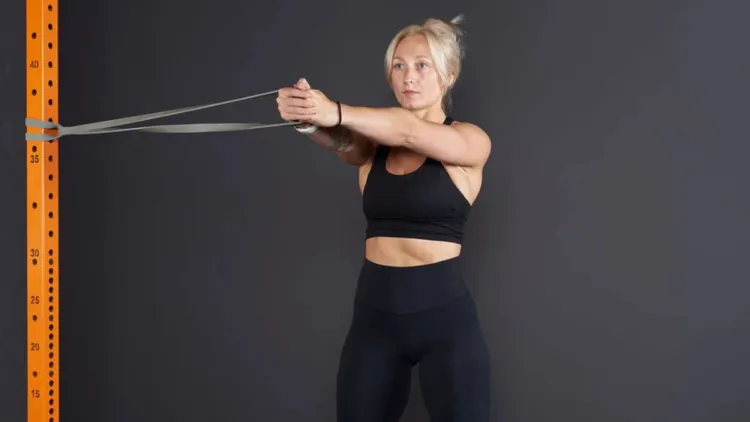
Common Mistakes to Avoid
Not to be at the best of all, prevent these errors when doing the Pallof Press:
- Rotating the torso: The aim is to counter revolution, not to revolutionise.
- It is the tension, not the weight, that is to be taken care of.
- Poor posture: Have your chest up and shoulders back.
- Rushing the movement: Controlled slow reps are important in the development of stability.
- Breathing: Breath out, pushing, and inhale, pushing.
By being able to correct these errors, you are going to make sure that your Pallof Press targets the correct muscles and will not harm your spine.
The Pallof Press: Why it is Worth Doing
The Pallof Press is, by any means, worth including in the workout program. It enhances stabilising muscles, which are usually overlooked, though they are necessary for all athletic movement and injury prevention. Although it is not as splashy as heavy lifts, its protective effects on the spine, posture and performance in the long term cannot be compared.
It is difficult because of its anti-rotation problem. Most of your muscles have to fight against the movement instead of producing it. This is the reason why it is sometimes more difficult than it appears. Feeling your way into it is to have your body learning the actual control of which few exercises can afford.
The Pallof Press will not be as popular in the gym culture as the queen of all exercises, the squat, but it is a necessary addition to it. Squats are power builders, and the Pallof Press is the stability builder to hold the power safely.
Guide to incorporating the Pallof Press into your routine
Pallof Press can be applied to most of the training programs. The following are some of the real-life aids to incorporate it:
1. Frequency
- Do it 2 -3 times a week with your intense or supplementary exercise routine. It may be completed either on rest days or as a warm-up before a compound lift.
2. Reps and Sets
- Novice: 2 series of 10-12 of each side.
- Intermediate: 3 sets of 12–15 reps.
- Advanced: Add walkouts or overhead presses to increase resistance.
3. Pairing
- Perform it after large-scale exercises like the squats, the deadlift or overhead press to stabilise. This is especially handy, before heavy bench press Workouts where the core works to hold the weight in the air, and by the way, only a small fraction of lifters can bench press 225 pounds, again reminding one of the importance of starting with basic strength.
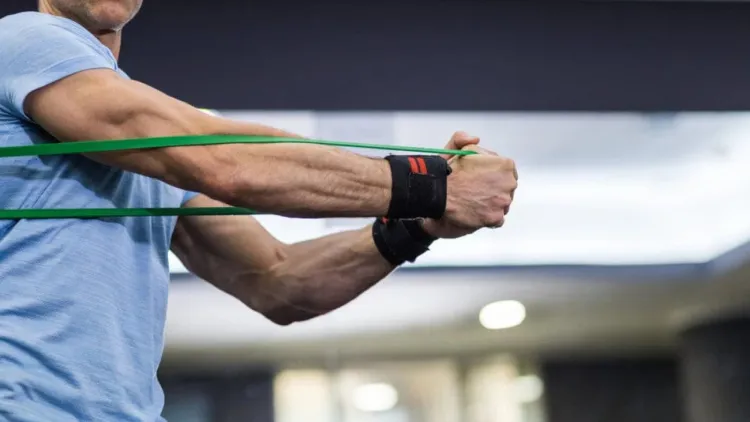
Final Thoughts
Pallof Press is among the best exercises to develop a strong and functional core. It creates more balance, posture, and performance, along with the ability to save and protect the back against injury. It may not be as popular as squats or bench presses, but it is equally beneficial and, in fact, should also be more important in the long-term strength.
The Pallof Press should be part of your training regimen, be it heavy lifting, sports, or just trying to improve your posture. When performed regularly and properly, it is what develops that strong heart strength that backs all other exercises in your exercise program.
Frequently Asked Questions
1. Will the Pallof Press make the abs?
The Pallof Press does make your core stronger; it does make your abs get tighter; it works a deep stabilising muscle, such as the obliques or transversus abdominis.
2. What is so hard about the Pallof Press?
This is difficult as your body does not want to turn, and several core muscles should counter the pull of the band during the exercise.
3. How frequently is the Pallof Press to be used?
Pallof Press twice or thrice a week. It improves balance, erection and muscles of the core when incorporated in your usual routines.
4. Would Pallof Press be a good addition to my exercise?
Yes! It develops a solid back, enhances stability and heavy weight lifting exercises such as squats and deadlift, and is thus suitable for all fitness abilities.

